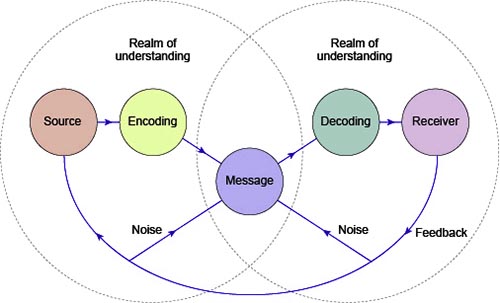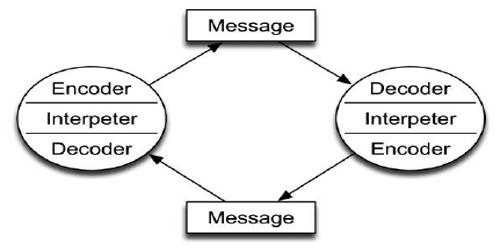Wilbur Schramm, a well-known communication theorist, developed a straightforward communications model in his book “The Process and Effects of Mass Communications“. In the model, Schramm shown as Aristotle did, that communication always requires three elements – the source, the message and the destination. Ideally, the source encodes a message and transmits it to its destination via some channels, where the message is received and decoded. Schramm’s Model of Communication was postulated by Wilbur Schramm in 1954, where he suggested that communication is a two-way process where both sender and receiver take turns to send and receive a message.
Information is of no use unless and until it is carefully put into words and conveyed to others. Encoding plays a very important role because it initiates the process of communication by converting the thought into the content. The Schramm Communication Model offers a classic approach to and explanation of communication. It can be used to determine how communication between two people works when they’re exchanging information, ideas, or attitudes. This model was adapted from the theories of another theorist Osgood, so it is also known as Osgood and Schramm Model of Communication or Encode-Decode Model of Communication. Thus encoding and decoding are the two most important factors of effective communication without which information can never flow between two individuals.
Schramm’s Communication Model
Schramm’s Model is as follows:

Schramm’s Model has different parts for communications where
- The sender is the person who sends the message.
- The encoder is the person who turns the message to be sent into codes. We need to think of the right words to say and in what order we should send our messages to communicate our ideas to the message receiver.
- The decoder is the person who gets the encoded message which has been sent by the encoder and converts it into the language understandable by the person. When receiving a message, we need to use our reading skills, listening skills, etc. to decode the message so it makes sense to us.
- The interpreter is the person who works to understand and analyze the message. The message is received after interpretation. The interpreter and receiver are the same people. One person may interpret the message in a totally different way to someone else. Or, they may not understand it the same way as the encoder, meaning they have ‘misinterpreted’ the text.
- The receiver is the person who gets the message. He/she decodes and interprets the actual message.
- The message is the data sent by the sender and the information that the receiver gets.
- Feedback is the process of acknowledging the received message by the receiver.
- Medium or media is the channel used to send the message.
- Noise is the interference and interruptions caused during the process. It is also created when the intended meaning of the message sent by the sender and the meaning interpreted by the receiver is different which is known as Semantic Noise.
Note: From the message starting to ending, there is an interpretation that goes on. Based on this interpretation only the message is received.
This model breaks the sender and receiver model it seems communication in a practical way. It is not a traditional model. When the information reaches the recipient his prime responsibility is to understand what the speaker intends to convey. According to Schramm’s model, coding and decoding are the two essential processes of effective communication. The Schramm Communication Model is a cyclical communication model containing all basic principles of communication.
Advantage
- Dynamic model- Shows how a situation can change
- It shows why redundancy is an essential part
- Assume communication to be circular in nature
- Feedback – central feature.
Disadvantage
This model does not talk about semantic noise and it assumes the moment of encoding and decoding.












